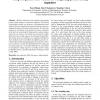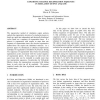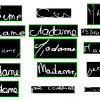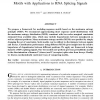700 search results - page 56 / 140 » Transducing Markov sequences |
108
Voted
CIARP
2009
Springer
15 years 7 months ago
2009
Springer
Many tasks can be described by sequences of actions that normally exhibit some form of structure and that can be represented by a grammar. This paper introduces FOSeq, an algorithm...
134
Voted
BIOCOMP
2010
14 years 9 months ago
2010
We have elaborated a new method of recognizing protein coding sequences in genomic sequences. The method is exploiting a specific way of genetic code degeneration and relations bet...
91
Voted
WSC
1998
15 years 1 months ago
1998
The regenerative method of simulation output analysis exploits the regenerative structure of a stochastic process to break up a path into independent and identically distributed c...
122
Voted
CVPR
2009
IEEE
16 years 7 months ago
2009
IEEE
This article proposes a novel similarity measure between
vector sequences. Recently, a model-based approach was
introduced to address this issue. It consists in modeling
each se...
116
click to vote
RECOMB
2003
Springer
16 years 25 days ago
2003
Springer
We propose a framework for modeling sequence motifs based on the maximum entropy principle (MEP). We recommend approximating short sequence motif distributions with the maximum en...




